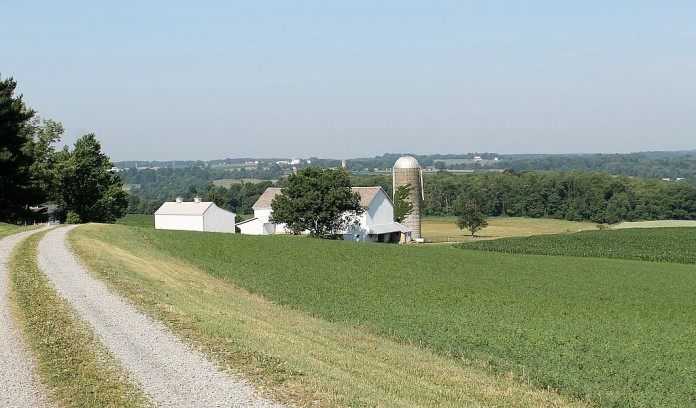SALEM, Ohio — The Ohio Senate unanimously approved a bill May 10 that includes the reform farm groups have sought to the state’s Current Agricultural Use Formula.
The Senate voted 33-0 in favor of S.B. 36, which requires CAUV to be calculated using a capitalization rate that excludes appreciation and equity buildup, and stipulates that CAUV land for certain conservation programs be valued at the lowest soil value.
The reforms have been before the legislature for at least the past three years, but this week marks the most progress in both the House and Senate. On May 2, the House passed its budget bill, which included similar reforms.
Steep increases
The primary sponsor of S.B. 36 was Sen. Cliff Hite, R-Findlay. During floor testimony on the bill May 10, Hite said the 280-350 percent increase in taxes that some have farmers have seen in recent years is too much, and that even non-farmers don’t see that kind of increase.
“That is unmanageable,” he said. “There’s no way you can save, not knowing that a spike like that’s going to hit you.”
The changes are intended to make the new formula more closely tied to the value of agricultural production and income, and encourage more conservation.
Note: Farm and Dairy watched the Senate meeting via The Ohio Channel.
“It’s about relief… and it’s important that we give people that are involved in our No. 1 industry in the state of Ohio, that type of relief,” Hite said.
The conservation incentive would be limited to certain conservation practices, or land enrolled in a federal land retirement or conservation program for at least three years.
The use of cover crops, by itself, would not constitute a conservation practice, according to the Senate bill. And, if the land is removed from conservation before the end of three years, the county auditor can charge for the reduction the farmer received.
Taxing conservation
Farmers and lawmakers have argued that it does not make sense to tax farmers as highly for land they’ve taken out of production, if they’re doing so to implement conservation practices.
Sen. Bob Peterson, a co-sponsor of the bill and a farmer from Fayette County, said the CAUV continues to be a good program for Ohio agriculture. But he said economic events in recent years, including an historically low rate on interest used in the existing CAUV formula, “created an inequity” that ultimately “increased, unfairly, the rates on landowners.”
Although the bill passed unanimously, several groups representing schools and county auditors in Ohio said they were concerned that changing the CAUV formula could cost schools and county governments millions of dollars each year.
Cost to schools
Sen. Joe Schiavoni, D-Boardman, said changing Ohio’s CAUV formula is necessary, and he voted in favor of the bill. But he warned that S.B. 36 could cost schools up to $18 million, according to a report by the Ohio Legislative Service Commission.
Peterson argued, however, that school districts already face losing money, because the CAUV has become so high that rural voters are turning against levies. He reasoned that with lower taxes, rural voters would be more likely to support future school levies.
The Ohio Farm Bureau commended the Senate for taking “a much needed step to help farmers who have been subjected to extraordinary property tax increases.”
Farm Bureau said the bill will bring relief to family farmers who have seen farmland property taxes increase by more than 300 percent in recent years, all at the same time that farm income has undergone significant decline.
Related coverage:
- More parties call for CAUV reform (March 3, 2017).
- Ohio Legislature again weighing CAUV reform (Feb. 24, 2017)
- Ohio Legislature punts on CAUV tax reform (Dec. 2, 2016).
- CAUV bills on hold in House and Senate committees (May 23, 2016).
- Ohio House committee hears CAUV testimony (May 4, 2016).
- County auditors and farmers testify on CAUV bill (April 29, 2016)
- High real estate taxes pressuring woodland owners and farmers (April 26, 2016).
- First proponent hearing on the Senate CAUV bill (April 12, 2016).
- Ohio lawmakers seek additional CAUV changes (November, 2015).
- Landowners sue Ohio over CAUV calculation (June, 2015).










